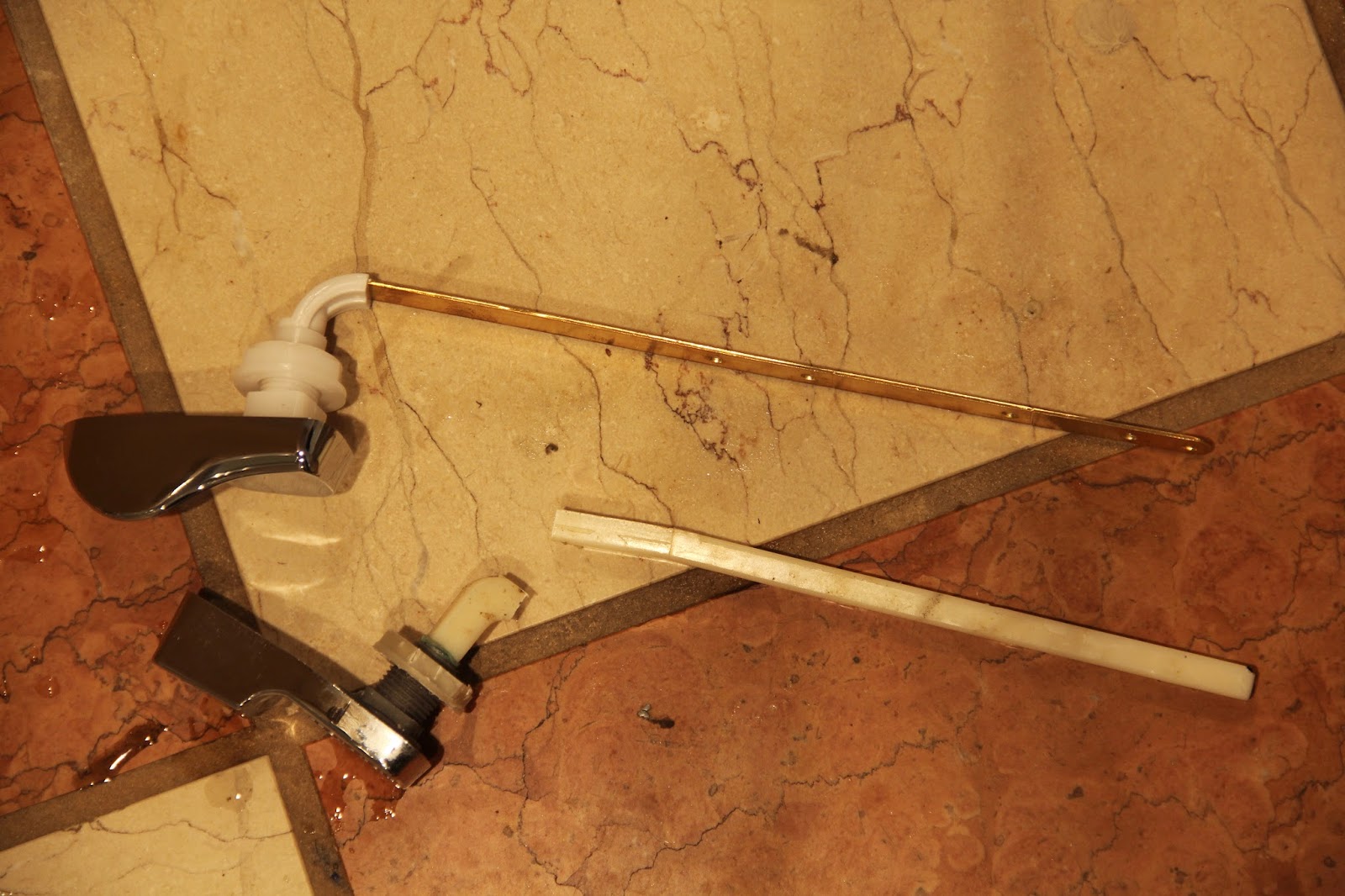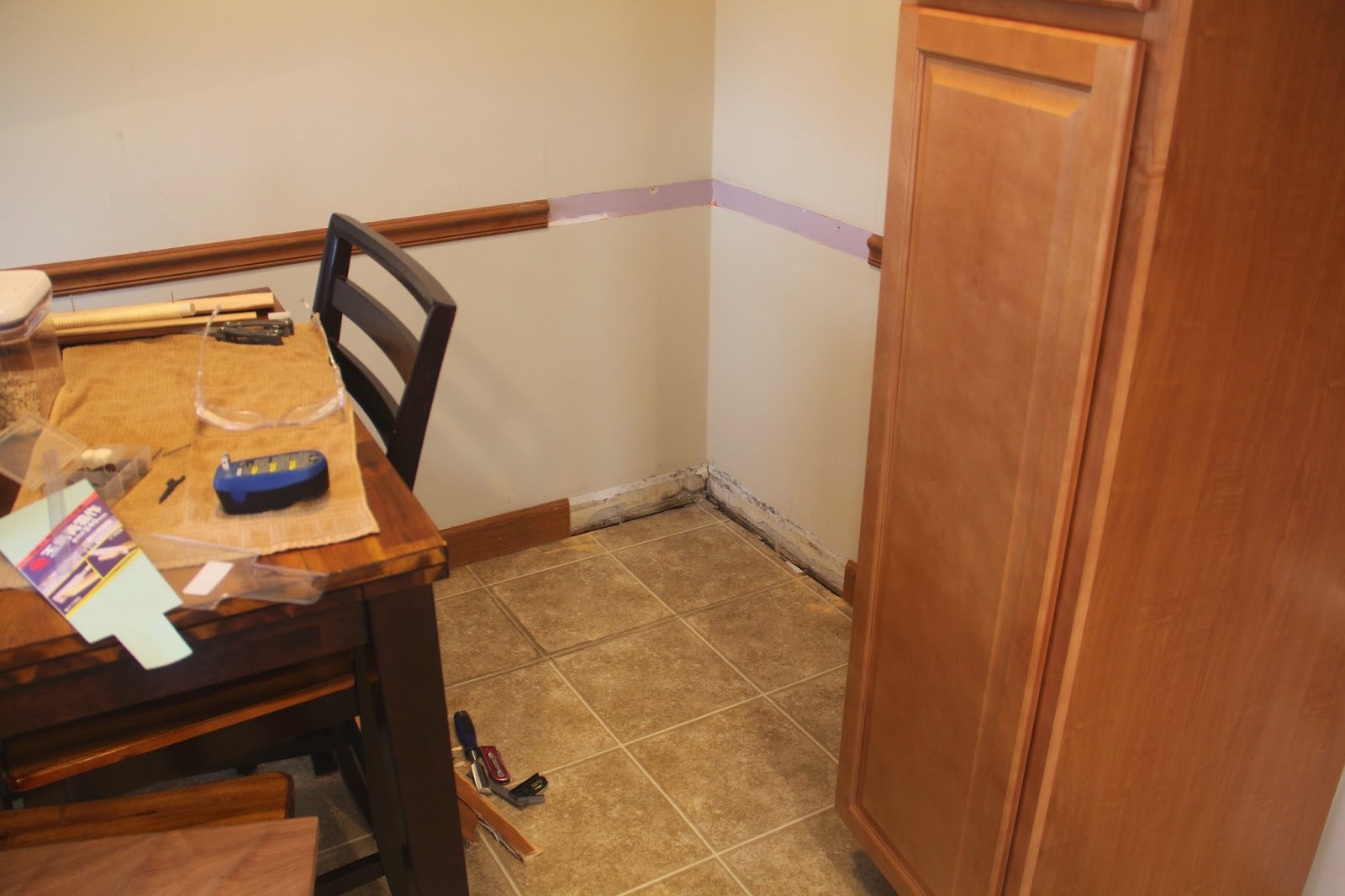The master bathroom has a toilet that has been very difficult to flush. This was probably due to the type of flush valve it had on it. Instead of a normal flapper, it had a tube that was lifted vertically, requiring the entire seal to be broken at once rather than peeled up like a flapper would. See the pictures below to help understand what I'm describing. Well the plastic flush lever finally gave way last night so while I was replacing it I figured I would replace the valve as well to make it easier to flush.
 |
| The broken lever. |
 |
| Here is the strange flush valve that pulls straight up. |
The first step in any toilet repair is to turn off the water and drain the tank. The tank is typically held on by two or three bolts (mine had three). I also removed the filler at this point to avoid breaking it as I worked.
 |
| Turn off the water. |
 |
| Tank removed. |
The flush valve is fastened to the tank with a large plastic nut covered by the tank gasket seen above. The gasket just pulls off and the nut is removed fairly easily.
 |
| Removed the old flush valve. |
Below is the new flush valve on the left with the old valve on the right. Notice the very different mechanisms.
 |
| New (L) and old (R) valves. |
After replacing the old valve I just reverse the steps to reattach the tank being sure to properly seat the gasket to avoid leaks. I slowly turned the water back on to fill the tank and check for leaks. Notice that the new valve is offset to the left, this is to allow free movement of the fill bulb which opens and closes the fill valve depending on water level in the tank.
 |
| Refilling with water. |
Next I replaced the broken lever with a new metal one I picked up at Lowe's. With the stronger lever and better valve, this should last quite some time.
 |
| Brass lever replaces plastic. |
 |
| Adjusting the chain. |
The last step was to adjust the flapper chain. This step is also useful if you have a running toilet. Adjusting the chain length determines how well the flapper valve is seated and can eliminate slow leaks that cause toilets to run every so often.





















